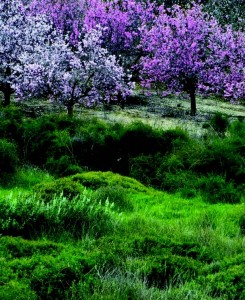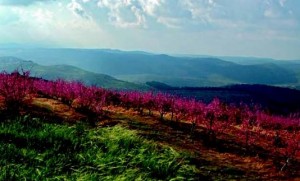There is a Season: Spring in Israel
I grew up in New England. Seasons in New England are the stuff of legend: Raging thunderstorms and scorching heat in summer, bursts of color in fall, snow measured by yardsticks in winter and a watercolor wash of flowers in spring. There is no missing it; the rhythm of the seasons is not subtle.
Moving to Israel involved many sacrifices, one of which was letting go of the extreme weather conditions and drastic changes of the Massachusetts landscape and accepting “plink” in place of “whoosh,” cotton in place of wool, a broom in place of a shovel. It took me years to appreciate having just two seasons– wet and dry. I was slow to adjust to the idea of every day being a nice day. I had to learn the vocabulary of the local forecast: warmer, cooler, a little cloudy.
While New England’s varied climate seems whimsical, the climate of Eretz HaKodesh is intentional. We have rain in its season because the Torah tells us we will (if we adhere to the conditions, of course). The amount of rain is determined by the sincerity of our teshuvah and the intensity of our tefillot. I am certain it is no coincidence that Israel’s rainy season begins immediately after the intense period of Tishrei. We begin the season with clean slates and sincere intentions to fulfill our Creator’s expectations in the months ahead. This is the closest we can come to ensuring an adequate rainfall.
As the rains taper off and the clouds begin to dissipate, Pesach reminds us of the renewal of the cycle, the return of the dew, the replenishment of wheat and fruit and flowers after the rain.
As the season changes from winter to spring in Israel, there are real, if rather subtle, shifts around us. Shabbat comes in a bit later and ends a bit later. The weather changes warrant adjustments in one’s wardrobe.
But in truth, the seasonal changes in Israel are quiet. Noticing the subtle shifts taking place requires a heightened awareness. We are summoned by what the prophets referred to as “kol demama daka,” the “small still voice,” to listen more closely, to look more carefully, to tune our senses more energetically inward in order to notice and appreciate these changes. The spiritual exercise of “tuning in” makes us more aware, more sensitive beings. When we become quiet enough to hear the “kol demama daka,” to appreciate the subtle changes in our Land, in ourselves and in one another, then we come to truly appreciate the beauty of Israel.
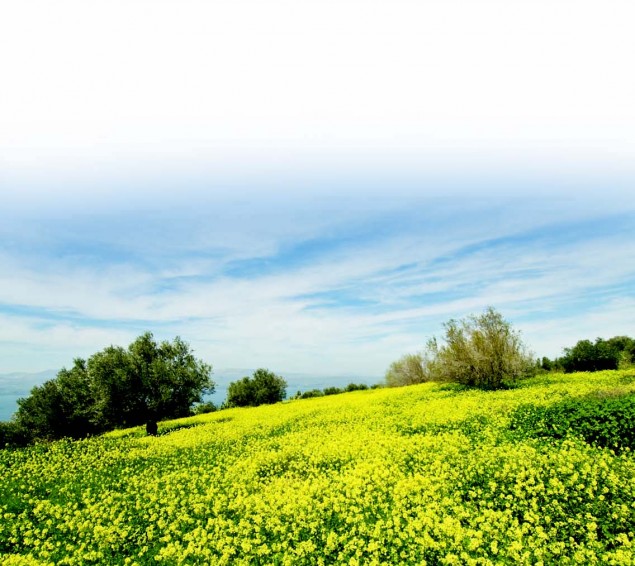 Golden mustard flowers carpet a field on a hill above the Kinneret.
Golden mustard flowers carpet a field on a hill above the Kinneret.
Almond trees, often blossoming in late January or early February, announce the arrival of spring in Israel.
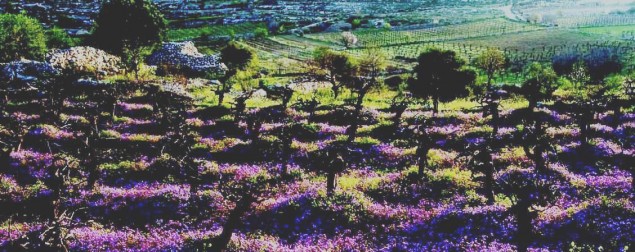 Wildflowers grow amid a vineyard in early spring in Gush Etzion, near Jerusalem.
Wildflowers grow amid a vineyard in early spring in Gush Etzion, near Jerusalem.
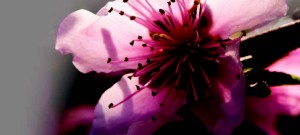 A single peach blossom at the height of its flowering.
A single peach blossom at the height of its flowering.
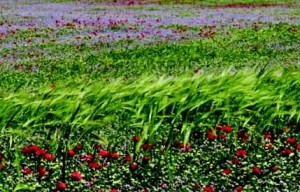 A field of mixed spring wildflowers and wheat growing in central Israel.
A field of mixed spring wildflowers and wheat growing in central Israel.
Peach blossoms in an orchard in the Judean Mo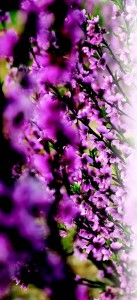 untains
untains
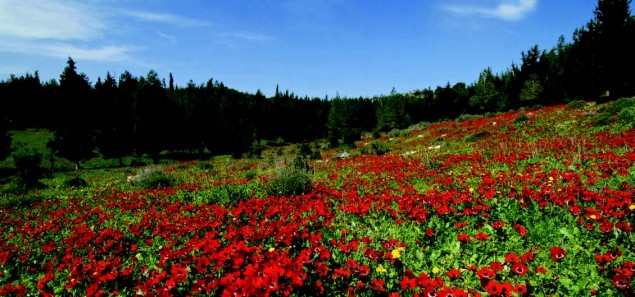 Poppies color a hillside in the Elah Valley in central Israel.
Poppies color a hillside in the Elah Valley in central Israel.
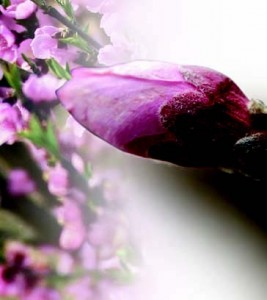 An almond blossom in its initial stages of growth.
An almond blossom in its initial stages of growth.
Sara Halevi is a freelance writer, psychologist and speaker, living with her family in the Judean Hills. See more of her musings at www.sarahalevi.blogspot.com.
Photos: Yehoshua Halevi/Golden Light Images Yehoshua Halevi is a professional photographer and journalist who immigrated to Israel from New England with his wife and children in 1998. His work has been published by National Geographic and other esteemed publications worldwide. His work can be seen at www.goldenlightimages.com.

